Benefits of Siddhasana (Accomplished Pose) and How to Do it by Dr Himani Bisht
By Dr. Himani Bisht +2 more

Get,

to manage your symptom
Get your,


4 Cr+ families
benefitted

OTP sent to 9988776655



You’ve successfully subscribed to receive
doctor-approved tips on
Whatsapp

Get ready to feel your best.

Hi There,
Download the PharmEasy App now!!


Register to Avail the Offer
Send OTPBy continuing, you agree with our Privacy Policy and Terms and Conditions

Hi There,
Sign up on PharmEasy now!!
Trusted by 4 crore+ families

OTP sent to 9988776655



You have unlocked 25% off on medicines




Code: NU25
By Dr. Himani Bisht +2 more
Table of Contents
Yoga is a mind-body therapy. It generally has three primary effects; it increases self-awareness of our inner perspective, encourages physical and mental health, and aids in recovery from a specific disease. Yoga teaches us the truth through the use of our body and mind. Yogasanas can increase the coordination between mind and body. Siddhasana is one such beginner-level asana having several benefits, such as enhancing blood circulation and stretching the lower back muscles1,2. Let’s read and find out more about siddhasana.
Siddhasana is made of two words, siddha, which means perfect, and asana, meaning pose. This is why it is also known as the perfect pose or the accomplished pose. It is called an accomplished pose since it might liberate people from their struggles. It can also be referred to as liberation pose or muktasana since it may give liberty2.
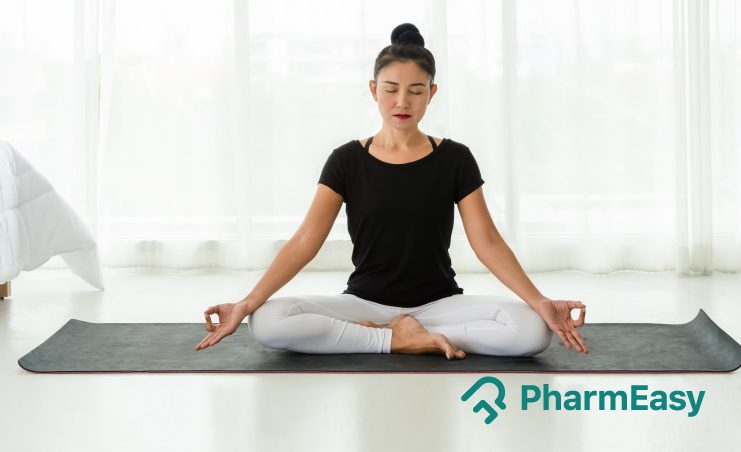
Did You Know?
The process of siddhasana is as follows2:
Let me tell you about a remarkable posture called Siddhasana. When you practice this pose, it potentially redirects the flow of blood to your lower spine and abdomen, giving a toning effect to these areas. It might work wonders for the lumbar region of your spine, the pelvis, and the abdominal organs. Not only that, but it may also help in balancing your reproductive system2.
Dr. Rajeev Singh, BAMS
The following are the siddhasana benefits
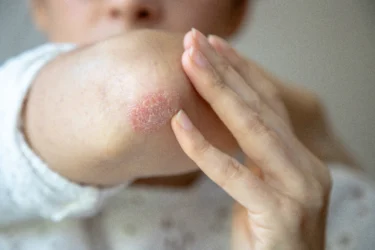
Psoriasis is an inflammatory skin condition that has remissions and relapses. According to Singh et al. (2015), yoga positions such as siddhasana help reduce inflammation in the body1. It is also stated that it might reduce stress and maintain immune system balance. This can help with the management of psoriasis. However, kindly see a doctor for proper treatment. It is best to try this under the supervision of a trainer.
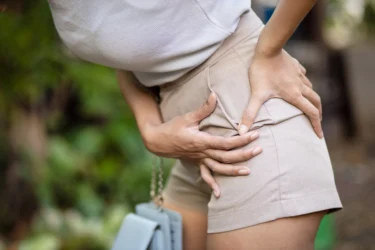
Lack of hip movement can cause all sorts of problems in everyday life. Therefore, it is advised to take care of hip movements and flexibility to avoid restrictions in movement. As per a study3 conducted by Gurmule et al., 2019, siddhasana could help strengthen the ligaments (which connect tissues to bones and joints) of hip joints. Siddhasana might also help by stretching the joint muscles and increasing flexibility. However, more research is needed to prove the effects of siddhasana on the hip joints in the elderly or people suffering from hip problems. Therefore, if you are suffering from hip joint issues, please consult a doctor before trying siddhasana in this condition.

Kaushal, 2016 studied4 that yoga asanas such as siddhasana can be a remedial measure to manage stress, tension and anxiety. It may affect and modify stress reactions and a person’s attitude toward stress. It may also boost self-esteem and a sense of well-being. This may promote peace and relaxation. However, you should visit a doctor for better outcomes and to avoid severe problems.
In my view, Siddhasana might go beyond the physical benefits and offer so much more. It may be suited for the advancement and development of not just your physical power, but also your spiritual and mental powers. It may provide a platform for you to tap into your inner strength and unlock your full potential7.
Dr. Smita Barode, B.A.M.S, M.S.
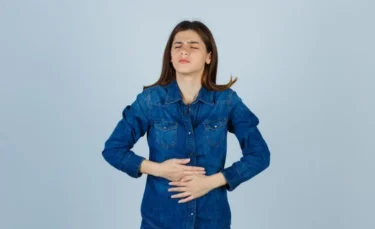
Khadkutkar et al., 2012 showed that yoga practices such as siddhasana could effectively manage a digestive disorder called amalpitta, caused by hyperchlorhydria (increased production of acids). Amalpitta is the result of a faulty diet and lifestyle. Siddhasana and other poses may help improve the excretion and digestion process. Enhanced digestion might improve the balance of pitta in the stomach5. However, you may consult a physician for diagnosis and treatment. It is better if you do it under the guidance of your trainer.
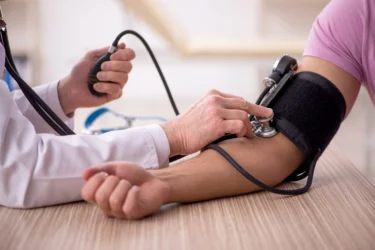
Pal et al., 2013 showed that siddhasana and other poses might effectively regulate blood pressure. After three months of yoga practice, there was a decrease observed in systolic blood pressure in the subjects. Systolic blood pressure is the pressure exerted by the blood on the walls of the arteries6. This indicates the possible role of siddhasana in managing blood pressure. However, do not rely on siddhasana alone, as more research is needed to evaluate the extent of its effectiveness. So, kindly see a doctor for proper treatment. It is best to try this under the supervision of a trainer.

In a study6 by Pal et al. published in 2013, siddhasana and other yoga poses effectively improved breath hold time (BHT) and oxygen consumption. This might help improve breathing. It also stated that yoga poses might increase anaerobic power, producing energy even with low use of oxygen to perform work with maximum speed. As a result, it might help improve the respiratory function of the individual. Even so, you must consult a doctor for proper diagnosis and treatment.
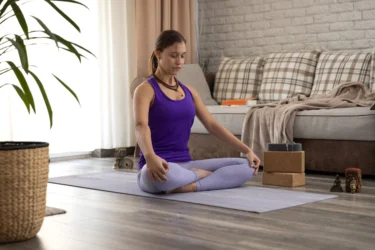
Some other benefits of siddhasana are as follows:
Yoga practice may help develop the mind and body; however, it is still not an alternative to modern medicine. You must not rely on yoga alone to treat any condition. Please consult a qualified doctor who will be able to assess your condition correctly and advise accordingly. Moreover, it is necessary to practice and learn yoga under the supervision of a trained yoga teacher to avoid any injuries.
In my opinion, Siddhasana might have a fascinating effect on our body and mind. When you practice Siddhasana, it may guide the energy from the lower psychic centres upward along your spine, creating wonderful stimulation in your brain. As a result, it might help to calm and soothe your entire nervous system2.
Dr. Siddharth Gupta, B.A.M.S, M.D (Ayu)
With the guidance of a qualified and experienced yoga teacher/yoga expert, we can access and analyse the risk factors and continue to practice exercise with precautions.
Siddhasana is a beginner-level yoga pose stimulating supernatural abilities in individuals. Seating posture yoga, siddhasana, might be effective in improving blood circulation in the lower spinal region or lower portions of the body. In addition, it might help in the management of stress and anxiety. Kindly consult the doctor if you experience unpleasant symptoms while practising the siddhasana. Try to perform this pose under the guidance of the trainer.
No. However, more research is needed on siddhasana to determine its effect on hair growth. However, please consult a doctor for hair related issues.
Yoga, such as siddhasana, impact nervous system regulation and physiological system functioning and improve psychological well-being. It can also enhance physical fitness (e.g., strength, flexibility, and endurance). So, it might be helpful in pregnancy7. However, more study is required to prove the effects of siddhasana on pregnancy.
No, although more research is needed to prove the effects of siddhasana on cancer. Kindly consult a doctor.
No, although more research is needed to prove the effect of siddhasana on cancer. Kindly consult a doctor if you suspect any cancer-related symptoms.
Siddhasana may help to tone the spinal region. It may also stretch the spinal muscles. Even so, you might consult the doctor for better health outcomes.
Disclaimer: The information provided here is for educational/awareness purposes only and is not intended to be a substitute for medical treatment by a healthcare professional and should not be relied upon to diagnose or treat any medical condition. The reader should consult a registered medical practitioner to determine the appropriateness of the information and before consuming any medication. PharmEasy does not provide any guarantee or warranty (express or implied) regarding the accuracy, adequacy, completeness, legality, reliability or usefulness of the information; and disclaims any liability arising thereof.
Links and product recommendations in the information provided here are advertisements of third-party products available on the website. PharmEasy does not make any representation on the accuracy or suitability of such products/services. Advertisements do not influence the editorial decisions or content. The information in this blog is subject to change without notice. The authors and administrators reserve the right to modify, add, or remove content without notification. It is your responsibility to review this disclaimer regularly for any changes.
Comments

Leave your comment...
You may also like
Comments